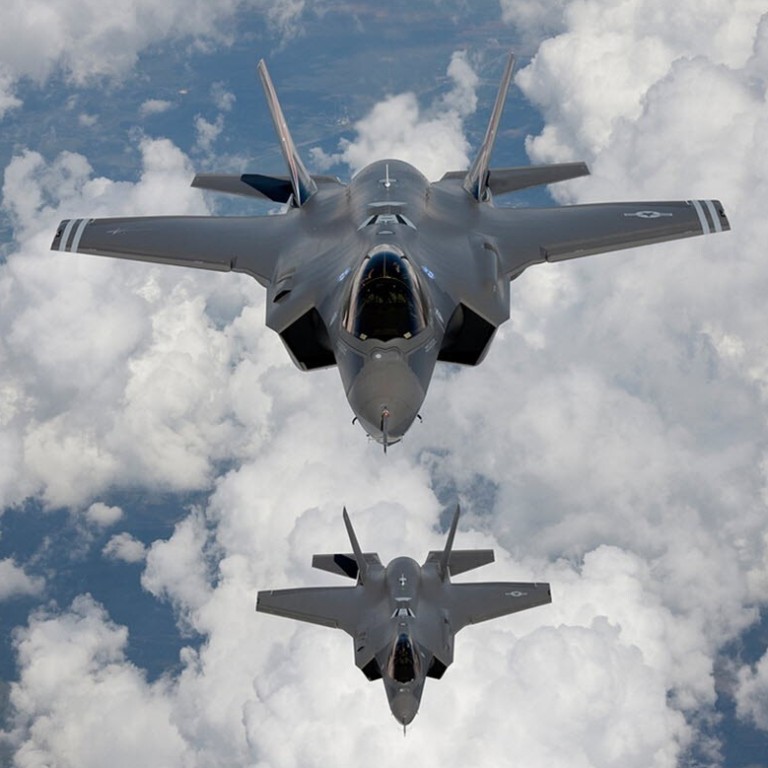
Chinese team says quantum physics project moves radar closer to detecting stealth aircraft
- Quantum particles in a man-made electromagnetic storm bounced back after hitting stealth object, increasing chance of detection, according to scientists
- The Tsinghua University researchers are seeking an industrial partner to build a full-sized prototype
Most radars are known for having a fixed or rotating dish, but this quantum radar looks more like a gun and could accelerate electrons to almost the speed of light. The electrons, after going through a winding tube in extremely strong magnetic fields, could produce a vortex of microwaves that barge forward like a tornado.
The new quantum radar would be more sophisticated than any previous radar systems and building it would not be an easy job, said Professor Zhang Chao and his team at Tsinghua University’s aerospace engineering school in a paper in Journal of Radars, a Chinese peer-reviewed publication, on Tuesday.
But “the better the stealth technology, the higher the gain” of the new quantum radar would be, they said.
The fundamental particles in this man-made electromagnetic storm would have some strange properties, the researchers said. Each had a spiralling momentum that did not decrease over time or distance, for instance.
According to Einstein’s theory, this is not possible. But the researchers explained the seemingly impossible behaviour of these high-energy particles with the law of quantum physics, using them to detect targets invisible to traditional radar from a long distance, even in bad weather.
In 2016, Chinese military scientists said they were testing a quantum radar prototype. This started a mini-arms race with similar experiments soon appearing in other countries.
But other scientists were sceptical.
“There’s just a lot of problems that make it hard for me to believe that this system is going to be of any use,” said Jeffrey Shapiro, an MIT professor and one of the first physicists who came up with the idea of quantum radar, in an interview with Science magazine last year.
A major advantage of Zhang’s new technology is that it works at microwave range.
Most other quantum radars used a laser beam that scattered and weakened quickly as it travelled in the atmosphere, especially through clouds or fog.
Ordinary microwaves did not contain particles with quantum properties that could help detect a stealth target, however. These particles could only be generated by a high voltage, superconducting electron accelerator with a complex design.
Zhang and colleagues tested a scaled-down version of the new quantum radar at a Tsinghua campus laboratory.
The quantum particles in the man-made electromagnetic storm bounced back efficiently after hitting a stealth object, increasing the chance of it being detected from 10 to 95 per cent, according to the researchers’ paper
But the most surprising result was that the sensitivity of the radar did not suffer as the researchers increased the distance of the target or the quality of stealth materials, confirming a prediction by quantum theory.
Zhang could not be reached for comment. According to a document on the university’s website, the team was seeking an industrial partner to build a full-sized prototype to operate at 10 gigahertz or 35 gigahertz, two frequencies commonly used by existing military radar systems.
“Chinese radar appeared relatively late. It was in a state of catching up in the past, and we were also under a strict blockade,” said the Tsinghua team in the document dated in January.
“After continuous exploration, China has built its own anti-stealth radar from basic theory to successful application in practice. At present, no country can reach our level in this field,” they said.
“At this stage, the government vigorously supports research in this field through various policies.”
China has developed several quantum radar systems using different technologies, according to a recent study by China Electronics Technology Group Corporation (CETC), a major defence contractor based in Chengdu, Sichuan province.
However, these machines could not work independently. They were added to traditional radar stations to increase their ability to detect stealth aircraft.
Quantum radar operating in microwave bandwidth had received a lot of attention, but at present these devices had issues that did not meet the requirement of military users, CETC engineers said.
The superconducting coil in the electron accelerator, for instance, could only operate at an extremely low temperature. Most radar operators did not want to maintain a refrigerator, and they worried about the stability of the complex accelerator.
But the transition from classic to quantum technology is under way. Some research teams in China are developing new quantum stealth technology for aircraft or missiles to help evade detection by quantum radars, according to the CETC study.

